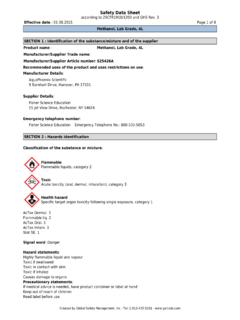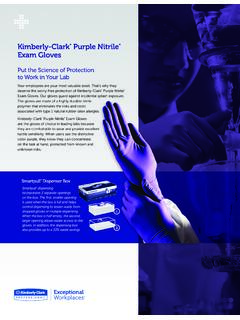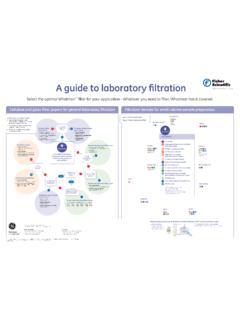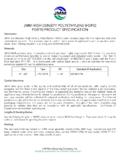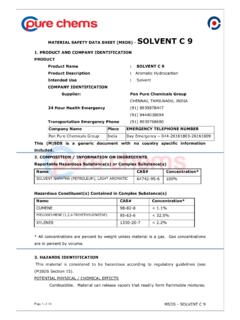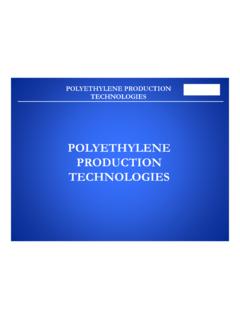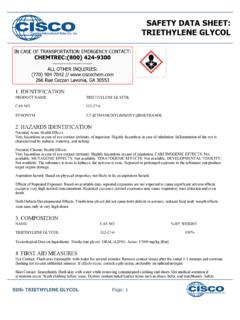Transcription of Safety Data Sheet - Fisher Sci
1 Safety Data Sheet according to 29 CFR1910/1200 and GHS Rev. 3. Effective date : Page 1 of 8. Phosphoric Acid,ACS. SECTION 1 : Identification of the substance/mixture and of the supplier Product name : Phosphoric Acid,ACS. Manufacturer/Supplier Trade name: Manufacturer/Supplier Article number: S25470B. Recommended uses of the product and uses restrictions on use: Manufacturer Details: AquaPhoenix Scientific 9 Barnhart Drive, Hanover, PA 17331. Supplier Details: Fisher Science Education 15 Jet View Drive, Rochester, NY 14624. Emergency telephone number: Fisher Science Education Emergency Telephone No.
2 : 800-535-5053. SECTION 2 : Hazards identification Classification of the substance or mixture: Corrosive Skin corrosion, category 1B. Corrosive to metals, category 1. Corrosive to Metals 1. Skin Corrosion 1B. Signal word :Danger Hazard statements: May be corrosive to metals Causes severe skin burns and eye damage Precautionary statements: If medical advice is needed, have product container or label at hand Keep out of reach of children Read label before use Do not breathe dust/fume/gas/mist/vapours/spray Wash thoroughly after handling Wear protective gloves/protective clothing/eye protection/face protection Keep only in original container Do not eat, drink or smoke when using this product Immediately call a POISON CENTER or doctor/physician Specific treatment (see on this label).
3 Wash contaminated clothing before reuse IF SWALLOWED: Rinse mouth. Do NOT induce vomiting IF ON SKIN (or hair): Remove/Take off immediately all contaminated clothing. Rinse skin with water/shower IF INHALED: Remove victim to fresh air and keep at rest in a position comfortable for breathing IF IN EYES: Rinse cautiously with water for several minutes. Remove contact lenses if present and easy to do. Continue rinsing Created by Global Safety Management, Inc. -Tel: 1-813-435-5161 - Safety Data Sheet according to 29 CFR1910/1200 and GHS Rev.
4 3. Effective date : Page 2 of 8. Phosphoric Acid,ACS. Store locked up Store in a corrosive resistant/ container with a resistant inner liner Dispose of contents/container to . Conc 10% to <25%: Eye Irritation 2, Skin Irritation 2. Conc <10%: Not classified for physical or health hazards under GHS. Other Non-GHS Classification: WHMIS. E. NFPA/HMIS. NFPA SCALE (0-4) HMIS RATINGS (0-4). SECTION 3 : Composition/information on ingredients Ingredients: CAS 7664-38-2 Phosphoric Acid >85 %. CAS 7732-18-5 Deionized Water <15 %. Percentages are by weight SECTION 4 : First aid measures Description of first aid measures After inhalation: Seek medical attention immediately.
5 Move exposed individual to fresh air. Loosen clothing as necessary and position individual in a comfortable position. After skin contact: Remove contaminated clothing and wash before reuse or discard. Rinse skin with for 30. minutes with deluge of water or under a shower. Seek immediate medical affected area with soap and water. After eye contact: Rinse immediately with plenty of water, also under the eyelids, for at least 30 minutes. Remove contact lens(es) if able to do so during rinsing. Seek medical attention unexposed eye.
6 After swallowing: Seek medical attention immediately. Rinse mouth thoroughly. Do not induce vomiting. Have exposed individual drink sips of water. Created by Global Safety Management, Inc. -Tel: 1-813-435-5161 - Safety Data Sheet according to 29 CFR1910/1200 and GHS Rev. 3. Effective date : Page 3 of 8. Phosphoric Acid,ACS. Most important symptoms and effects, both acute and delayed: Irritation, Nausea,Headache, Shortness of cause severe burns and ulcerations. May cause severe burn and irreversible eye injury. May cause gastrointestinal tract burns, corrosion and permanent tissue damage of the digestive tract and esophagus.
7 Indication of any immediate medical attention and special treatment needed: If seeking medical attention, provide SDS document to off contact areas with a dry cloth if possible, before flushing with water. Dispose of cloth by soaking in water. Neutralize the soaking solution with sodium hydroxide solution. SECTION 5 : Firefighting measures Extinguishing media Suitable extinguishing agents: If in laboratory setting, follow laboratory fire suppression procedures. Use appropriate fire suppression agents for adjacent combustible materials or sources of ignition For Safety reasons unsuitable extinguishing agents: Special hazards arising from the substance or mixture: Hydrogen gas is released in contact with most metals.
8 Combustion products may include carbon oxides or other toxic products may include phosphine, oxides of phosphorus, and hydrogen gas. Advice for firefighters: Protective equipment: Wear protective equipment Use respiratory protective device against the effects of fumes/dust/aerosol/vapor . Use NIOSH-approved respiratory protection/breathing apparatus. Additional information (precautions): Move product containers away from fire or keep cool with water spray as a protective measure, where feasible. SECTION 6 : Accidental release measures Personal precautions, protective equipment and emergency procedures: Wear protective equipment.
9 Avoid contact with eyes, skin, and clothing. Use respiratory protective device against the effects of fumes/dust/aerosol. Keep unprotected persons away. Ensure adequate away from ignition sources. Protect from the spill, if possible. Contain spilled material by diking or using inert absorbent. Transfer to a disposal or recovery container. Environmental precautions: Prevent from reaching drains, sewer or waterway. Collect contaminated soil for characterization per Section 13. Methods and material for containment and cleaning up: Absorb spillage to prevent material damage due to corrosiveness to metal.
10 If in a laboratory setting, follow Chemical Hygiene Plan into properly labeled containers for recovery or disposal. If necessary, use trained response liquids using inert absorbent material. Reference to other sections: SECTION 7 : Handling and storage Precautions for safe handling: Wash hands after handling. Do not mix with bases. Use in a chemical fume good hygiene procedures when handling chemical materials. Do not eat, drink, smoke, or use personal products when handling chemical substances. If in a laboratory setting, follow Chemical Hygiene only in well ventilated contact with eyes, skin, and clothing Conditions for safe storage, including any incompatibilities: Store away from oxidizing in cool, dry conditions in well sealed containers.

